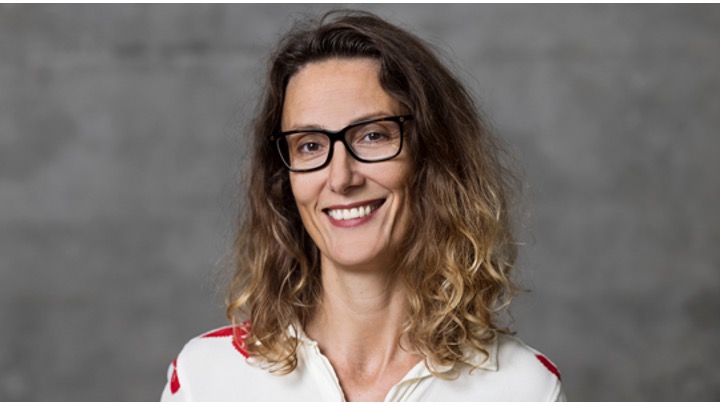|
|
|
Previous webinars > 13th EDRA Webinar - October 8th, 202413th EDRA Webinar October 8th, 2024, from 4:00 to 5:30 pm (CET)
Prof. Dr. Anja Groth - Keynote speaker Center for Protein Research, University of Copenhagen, Copenhagen, Denmark Epigenetic cell memory: how cells copy their epigenome Genome organization and function must be maintained across quadrillions of cell divisions during human lifespan. This is key to development and healthy life, delaying aging and avoiding cancer. The Groth group explores how chromatin organization is replicated and propagated across cell division to maintain genome stability and function. A key goal is to identify mechanisms that underpin epigenetic cell memory and understand how cell proliferation impacts on cell plasticity. We have developed a panel of tailored omics technologies to address epigenome replication and combine these with structural studies and functional analysis in mouse embryonic stem cells. I will discuss the role of chromatin replication in epigenetic cell memory and our latest insights into how histone-based information is transmitted during DNA replication.
Ànnia Carré Simon - short talk IRSL, Université de Paris, France Smc5/6 association with microtubules controls pericentromeric dynamic chromatin folding Chromosome folding has recently emerged as essential for maintaining genome integrity. In the budding yeast, chromosomes follow a Rabl configuration, which is repeatedly found across eukaryotes and plays a critical role in maintaining genome integrity upon DNA damage. However, how the dynamics of chromosome folding is controlled and its role in double strand breaks (DSB) repair is not fully understood. The Smc5/6 chromosome maintenance complex is enriched at centromeres, recruited to DSBs and, in yeast, interacts with microtubules and forms DNA loops by extrusion. By imaging chromosome locations at a high temporal resolution in living cells, we investigate how association of the Smc5/6 complex with microtubules controls dynamics of chromosome folding and repair. We created an smc5-2KE mutant, in which the two lysines (K624 and K631) of the Smc5 protein are replaced by glutamic acid, which shows decreased binding to microtubules in vitro. Importantly, the smc5-2KE mutant has no effect on cell viability or cell cycle progression but leads to an increase in chromatin dynamics in pericentromeric regions and along chromosome arms. Results show that in loci far from the centromere microtubule depolymerization and kinetochore disruption phenocopies the smc5-2KE mutant. Whereas in the pericentromeric region, the Smc5-2KE mutation leads to an increase in chromatin mobility correlated with changes in chromatin properties, reproduced by polymer modeling. Accordingly, the smc5-2KE mutant exhibits a strong decrease in Homologous Recombination repair only in the pericentromere, defects in the mitotic spindle length, centromere clustering and cytokinesis. Overall, our results show that the Smc5/6 complex through its association with microtubules plays a role in safeguarding the pericentromeric structure.
Kumar Somyajit - short talk Functional Genomics and Metabolism Research unit - University of Southern Denmark, Odense, Denmark The natural paucity of lagging strand activities sculpts global DNA replication program A faithful and complete genome duplication is tightly surveyed by the S-phase checkpoint (the ATR pathway). The generation of single-stranded DNA (ssDNA) within the replisomes triggers the ATR pathway, whose principal function is to limit CDK activities and orchestrate sequential origin firing during each S-phase and thus lay the foundation for timely and flawless genome replication. It is now well appreciated that stochastic replication stress events trigger transient ATR signals even during unperturbed DNA replication. However, the nature and the sources of such stochastic checkpoint-inducing physiological replication stress remain unidentified. Here, we identify human KIAA0101 (PCNA-associated factor 15: PAF15) as a dosage-limited replisome component whose natural paucity within replication factories destabilizes PCNA and triggers mild replication stress, leading to the physiological activation of the ATR pathway. This scarcity is tightly regulated by the E2F repressor complex and APCcdh1-mediated PAF15 degradation during G1 and early S-phase. Mechanistically, PAF15 fosters PCNA stability and dynamics during Okazaki fragment maturation; its absence disrupts this process, leading to the accumulation of checkpoint-activating replication intermediates on the lagging strand. Curiously, overexpression of PAF15 beyond its physiological levels disrupts DNA replication and cell proliferation by interfering with several PCNA functions, including those at the leading strand, underscoring its critical, rate-limiting role. Finally, PAF15 is an oncoprotein whose overexpression correlates with the aggressiveness and stage of tumor formation. Our results suggest that, despite such overexpression, PAF15 is still rate-limiting when normalized for the total genome content. Together, these findings uncover a fundamental mechanism where PAF15-PCNA scarcity maintains DNA replication fidelity and triggers the S-phase checkpoint under normal conditions, while also exposing potential "molecular vulnerabilities" in cancer cells facing high replicative stress.
|



